Rhône’s Southern Charm: Seven Elevated Crus Show Distinctive Typicity and Singular Expression. (10-Bottle Pack $299) + NEW ARRIVALS – Domaine Laroche, 2020 Chablis Releases
More than angular Bordeaux or earthy Burgundy, or even the fat, smoky offerings from Northern Rhône, the wines of the Southern Rhône epitomize the notion of ‘user friendly.’ Big and luscious when young, rich and fruit-centered as they age, these wines are not only sumptuous at all stages, they are often available at price points very congenial to consumers. A veritable varietal free-for-all with up to 19 different grapes legally permitted, this includes using white-skinned grapes (in particular, Viognier) in red wine to add perfume and spice and results in some of the most distinctive cuvées in France.
The irony of Southern Rhône, perhaps, is that the most famous name, Châteauneuf-du-Pape, may bludgeon a drinker with its sheer, high-alcohol hedonism. But in honesty, in the broader context, Châteauneuf operates in a personal orbit somewhat removed from the greater appellation, with its own PR machine, workforce and identity.
This week’s wine package highlights seven of CdP’s Southern Rhône co-stars. None are really rivals, and they certainly are not also-rans, and although a few may style themselves after Châteauneuf, they are all unique representatives of their individual places of origin.
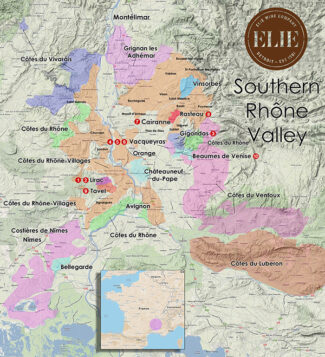
They’re also examples of the realities of the global warming in Southern Rhône, where vineyards at higher elevations are finding that changing conditions can actually work in their favor. If nothing else, it this combination of pluck, reason and savoir faire that may be viewed as the benchmark ideology behind the elegant and opulently textured wines of Southern Rhône beyond du Pape.
The Grapes: GSM Rules
The core of the cuvée concept in any wine region is that individual varieties tend to have both strengths and weaknesses; if a vintner can take advantage of a strength and compensate for a weakness, success is achieved. In Southern Rhône, the industry slang ‘GSM’ refers to the magical synergy that comes from a classic marriage of Grenache, Syrah and Mourvèdre, although not necessarily in that order. Grenache provides abundant fruit and soft spice while Syrah is responsible for a tannic backbone and body-structure with black pepper notes and Mourvèdre adds color, complexity and elegance.
Although the acronym ‘GSM’ likely originated in Australia, the spiritual home for this triumvirate is Southern Rhône, where the complementary meshing of the three varieties became the official mode of the region in 1937. By local law, a minimum of 30% GSM must make up at least 70% of the blend. That said, the blends tend to be a bit lopsided in Southern Rhône. Grenache is the most widely planted grape and tends to make up the lion’s share of overall blends, with other varieties adding counterpoint notes, but not dominance.
cru Lirac
‘Perfume, Savoriness and Complexity’
To say that the wines of Lirac are lyrical is not just a pun; the noted combination of elegant perfume and savory grace softens the might. Lirac’s reds are similar in style to the softest of the Côtes du Rhône Villages but miles ahead in complexity: 85% of Lirac production is red, with rosés accounting for 5% and whites the remaining 10%.
Lirac’s two thousand acres are directly across the Rhône from Châteauneuf-du-Pape, and the appellation shares the same iconic galets roulés scattered throughout the sandy limestone soils. Vineyards on Lirac’s upper terraces are generally made of red clay and the large pebbles are here known as ‘terrasses villafranchiennes’; the soil of the lower vineyards shows more loess and clay-limestone. All elevations are prone to summer drought and, under certain strictures, irrigation is allowed.
“The terroir of Lirac is often hidden in the shadows of Châteauneuf-du-Pape,” says Laure Poisson of Les Vignerons de Tavel & Lirac. “But in recent years, Lirac has emerged from the shadows to become something different, something unique.”
Domaine de la Mordorée
GSM represents the Big Three in Southern Rhône, but at Domaine de la Mordorée, the most significant trio is Christophe and Fabrice Delorme along with their father Francis. In 1986, they purchased an estate in Tavel with the intention of producing world-class wine while remaining dedicated to an ecologically-sound stewardship of their land. The success of the venture may be measured by the glowing praise heaped upon them by Robert Parker Jr. in 2007: “With 135 acres spread throughout some of the most impressive appellations of the Southern Rhône, Christophe Delorme and his brother have produced one exquisite wine after another. Of course, the top cuvées of Châteauneuf-du-Pape are rare and expensive, but this is a place to find terrific Côtes-du-Rhônes and Liracs as well. Delorme is equally adept at dry whites as well as reds, and turns out some stunning rosés both under the Côtes-du-Rhône and Tavel appellations.”
With the untimely passing of Christophe in 2015, his daughter Ambre has stepped in; also invaluable to the current team is winemaker Rémy Chauvet, who worked as Christophe’s cellar manager. The 135 acres mentioned by Parker Jr. cover 38 parcels in Tavel, Châteauneuf-du-Pape, Lirac, Côtes-du-Rhone and Condrieu; the variety of terroirs thus explored make trellising a vital consideration. Says Fabrice, “Goblet training is used for older, untrellised vineyards, with the canopy remaining free, a traditional pruning method provides better resistance to wind and drought and lesser sensitivity to trunk diseases. Cordon de Royat training is used for newer, trellised vineyards. The newer method allows for higher vines, leaving a larger leaf surface exposed to the sun, which yield colorful grapes that are richer in tannins and in sugar. Exposure to sunlight also produces healthier grapes and allows a greater development of aromas.”
Land stewardship remains vital to the Mordorée culture, which adheres to the raisonnée method—intervening in the vineyard only when necessary. The yield is reduced in the vineyard by ébourgeonnage (de-budding in spring) and vendanges vertes (green harvesting) in the summer.
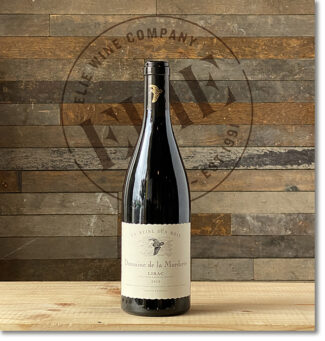 1. Domaine de la Mordorée ‘La Reine des Bois’, 2019 Lirac ($38)
1. Domaine de la Mordorée ‘La Reine des Bois’, 2019 Lirac ($38)
40% Syrah and 30% each of Grenache and Mourvèdre grown on 40-year-old vines among the famous ‘galets roulés’—large stone pebbles—that mark this part of the Rhône’s sand and clay soils. While 10% is fermented in older casks, 90% of the wine goes into stainless steel; the wine shows juicy forest berry behind crushed-stone minerality livened up with sizzling black spice. It’s lush and velvety with violet notes and a touch of mocha.
*click on photo for more info
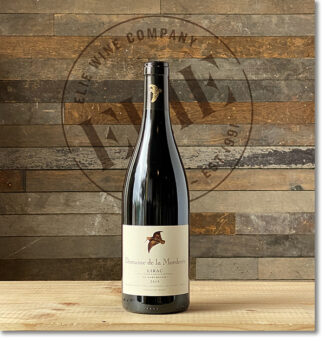 2. Domaine de la Mordorée ‘La Dame Rousse’, 2019 Lirac ($26)
2. Domaine de la Mordorée ‘La Dame Rousse’, 2019 Lirac ($26)
The ‘Redheaded Lady’ is a blend of 50% Grenache and 50% Syrah grown on 50 acres of 40-year-old vines. It’s loaded with smoky black cherries, licorice, scorched terra cotta and a richly expressed minerality that is characteristic of this pebble-littered terroir.
*click on photo for more info
cru Gigondas
‘Luscious fruit, Generosity and Spice’
Where the terrain of Châteauneuf-du-Pape is sun and wind, Gigondas is forest and scrubland filled with wild lavender, sage and thyme, forming the archetypal ‘garrigue’ of Southern France. These brambly, herbal aromatics are a common in tasting notes of Gigondas wines, and it is perhaps testimonial to the phenomenal power of terroir that grapes and wildflowers can coax the same flavors from the earth: a combination of limestone soils on the Montmirail slopes to the east, and rocky, sandy, free-draining soils on the flatter, lower-lying plains to the north and west.
Maximum yield in Gigondas is set at 36 hectoliters per hectare, only slightly more than the restrictions of Châteauneuf-du-Pape. As an additional quality assurance, a technique known as ‘triage’ is employed—the mandatory separation of healthy grapes from imperfect grapes.
Domaine Le Clos des Cazaux
With forty acres of prime Gigondas terroir facing the rocky slopes of Les Dentelles de Montmirail and another 55 in Vacqueyras, brothers Jean-Michel and Frédéric Vache credit success to a number of factors, including old-vine parcels, a conscientious approach to winemaking and their atmospheric 11th century cellar. Among the technical aspects favored by their process are long maceration periods, extended élevages and no new oak.
In the Vacqueyras, their vineyards grow on somewhat exclusive terroir; the safres and marls of the Miocene era represent less than 10% of the appellation. In the extreme south of Gigondas dominated by the remains of an old, 8th century watchtower (La Tour Sarrasine), the southerly exposures of the hillside vines receive ideal sunshine balanced by cool nights and enhanced by the clay-rich soils.
Of the origins of the estate’s name, Frédéric explains: “The Vache and Archimbaud families are among the oldest families in Vacqueyras. Indeed, they are already present in the first Clerical registers of the 17th century. The oldest part of the building, currently our tasting cellar, dates from the 12th century and would have belonged to the Knights Templar. A farmer was then in charge of livestock and crops. This farmer was called ‘Chasal’, a word which over time was to become ‘Cazaux’, the current name of the estate.”
Jean-Michel adds, “The first plantations of vines date from the middle of the 19th century, on the poorest soils, where nothing else could grow. In these times when food sufficiency was at the center of all concerns, the vines simply ensured the family consumption of wine. In the 20th century, the cultivation of the vine intensified to become a monoculture from 1957, immediately after the catastrophic frosts of 1956 which ravaged the olive, apricot and cherry orchards.”
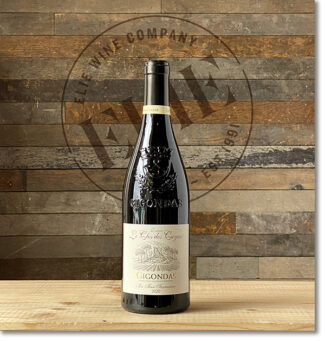 3. Domaine Le Clos des Cazaux ‘La Tour Sarrasine’, 2020 Gigondas ($31)
3. Domaine Le Clos des Cazaux ‘La Tour Sarrasine’, 2020 Gigondas ($31)
A blend of 70% Grenache and 15% each of Syrah and Mourvèdre from vines between 30 and 60 years old. The wine is redolent of black bramble-berries and shows notes of new saddle leather, lavender and Herbes de Provence. The fruit is in the forefront behind tannins, and a great balance between the two offers a pure and seamless mouthfeel.
*click on photo for more info
cru Vacqueyras
‘Sleek, Fresh and Light on Its Feet’
Quality will out: Vacqueyras was once one of the Côtes du Rhône villages, but the consistent quality of its wines—in particular, its intensely concentrated reds—earned it an upgrade to a full, independent AOC in 1990. With Gigondas to the northeast and Châteauneuf-du-Pape to the northwest, Vacqueyras is a wine that resembles both, although it is generally considered to be slightly less refined. By law, the wines of Vacqueyras are required to contain at least 50% Grenache, while Syrah and Mourvèdre must together account for at least 20%. Any of the other Côtes du Rhône varieties may make up 10 percent—Carignan was formerly excluded, but is now permitted.
Vacqueyras nestles at the feet of the Dentelles de Montmirail foothills, and the finest vineyard sites are on the steep, southwest-facing limestone slopes just to the east of the town. These hills demonstrate the origins of the landscape, divided between limestone ridges at 1650 feet and an alluvio-glacial terrace formed many thousands of years ago. The climate is strictly Mediterranean—the sea is 50 miles to the south—blessing the region with a long, hot, dry growing season, ensuring maximum ripeness in its vineyards. This, combined with south-westerly exposures, explains the relatively high density of vines in Vacqueyras’ vineyards.
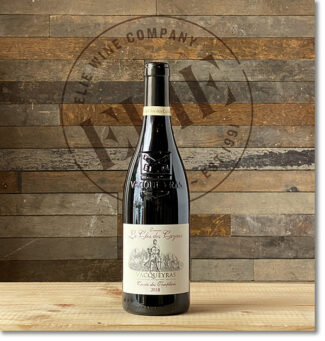 4. Domaine Le Clos des Cazaux ‘Cuvée des Templiers’, 2018 Vacqueyras ($28)
4. Domaine Le Clos des Cazaux ‘Cuvée des Templiers’, 2018 Vacqueyras ($28)
50% Grenache, 40% Syrah and 10% Mourvèdre from vines between 30 and 50 years old; Plush and juicy, the fruit-jamming quality of Grenache is balanced by sharper, savory tones of Syrah and Mourvèdre to make a keenly balanced, silky-textured red nuanced by hints of toast, wet earth and cocoa powder.
*click on photo for more info
Domaine de La Colline Saint Jean
Domaine de La Colline St. Jean has been family-owned for several generations; the dynamic Roland Alazard, who passed away in 2013, has passed down the reins to his son Cyril and his daughter Aurélie, who have dedicated themselves to preserving the character and traditions of this classic Côtes-du-Rhône wine.
Their sixty acres of south facing vineyards in Vin de Pays du Vaucluse (IGP), Côtes-du-Rhône, Vacqueyras, Gigondas and Beaumes de Venise include vines of an average age of 50 years and are planted primarily on clay and limestone.
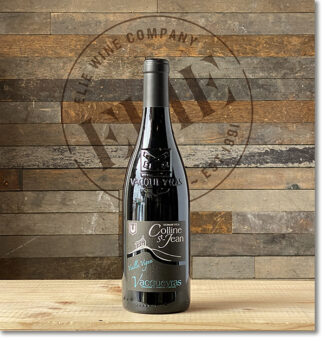 5. Domaine de La Colline Saint Jean ‘Vieilles Vignes’, 2019 Vacqueyras ($33)
5. Domaine de La Colline Saint Jean ‘Vieilles Vignes’, 2019 Vacqueyras ($33)
80% Grenache and 20% Syrah from vines between 85 and 110 years old. Picked manually, then sorted and destemmed, following which, the must is macerated on the skins for 20 days in concrete vats. The wine displays ripe black fruits, plum, brandied cherries, and finely-grained tannins that leave the impression of chocolate dust.
Domaine La Garrigue
In the world of wine, longevity is the consummation devoutly to be wished; it means staying power, both on the palate and in the field. Domaine La Garrigue was founded in 1850 by the same family that runs the property today. Brothers Maxime and Pierre Bernard are at the helm, with wives, children, nieces and nephews all at work, and there is plenty to be done: At over two hundred acres, it is the largest domain in Vacqueyras and the Bernard family was instrumental in having the region elevated to Cru status.
There are three terroirs in Vacqueyras, and La Garrigue has plots in each of them, aware of what each brings to the party. Red-clay-under-galets plateau of La Garrigue (not coincidentally, where Domaine la Garrigue is located) offers power and depth, the sandy soils around the village of Vacqueyras bring finesse and the rocky limestone slopes at the foot of the Dentelles de Montmirail mean structure.
This property focuses on making wines with minimal manipulation to let the terroir speak through the wines. The oldest vines of Domaine de la Garrigue were planted in the late 1940’s, just after the Germans left the area after World War II.
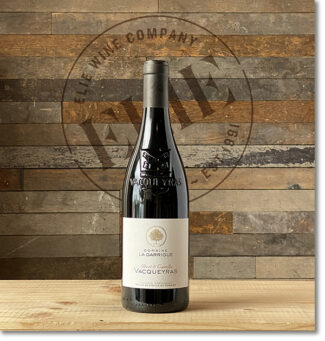 6. Domaine La Garrigue ‘Albert & Camille’, 2019 Vacqueyras ($26)
6. Domaine La Garrigue ‘Albert & Camille’, 2019 Vacqueyras ($26)
75% Grenache, 10% Syrah, 10% Mourvèdre, 5% Cinsault grown on clay-limestone and sand on an ancient river terrace. La Garrigue’s flagship wine is a quintessential and charming Vacqueyras loaded with brandied cherry, Damson plum and mulberry above complex undertones of leather, pepper and spice.
*click on photo for more info
cru Cairanne
‘Distinct Finesse and Elegance’
Cairanne picked up Cru status in 2016, and with the stroke of that bureaucratic pen, no longer had to label itself a Côtes du Rhône Villages. Found east of Orange, the soils of Cairanne are predominantly built of alluvial limestone from several local rivers and streams; red, iron-rich earth over sandstone bedrock is also found throughout the appellation. Topography ranges from the glacial plateau to the south of the town to the slopes of the Dentelles de Montmirail foothills to the north and west.
Cairanne is often called ‘the gateway to the Southern Rhône’, combining the typically northern Syrah grape with the much heat-loving Grenache and Mourvèdre. The Mediterranean is dry with plenty of sunshine, and most importantly, vineyard health is heavily influenced by the Mistral wind.
Domaine Alary
Denis Alary of Domaine Alary considers himself a perfectionist as well as a grand idealist; his seventy acres of vineyard, entirely in Cairanne, is where he goes to relieve the stress that accompanies the loftiness of his ambitions. “Alone,” he says: “Without a cell phone.” As he took over the estate from his father Daniel, the oenologist is now passing responsibility to his son Jean-Étienne who brings an international reputation to this dry, dusty corner of France, having vinified at New Zealand’s Seresin, Australia’s Henschke and in France at Confuron-Cotetidot in Burgundy.
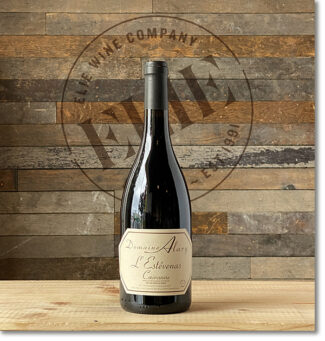 7. Domaine Alary ‘L’Estévenas’, 2019 Cairanne ($26)
7. Domaine Alary ‘L’Estévenas’, 2019 Cairanne ($26)
60% Grenache, 40% Syrah. Blackberries, a wine jammed with black cherries, applewood, garrigue and floral notes with loads of Provençal charm, notable complexity, fine tannins and a long, mineral-crisp finish.
*click on photo for more info
cru Rasteau
‘Profound Ripeness and Intensity’
“Rasteau is a powerful wine,” says Helen Durand of Domaine du Trapadis. “Power and freshness aren’t opposites here. Even if acidity is soft, there is freshness from minerality and finesse, particularly with age.”
Long considered one of the best of the Côtes du Rhône Villages, the appellation obtained Cru status for dry red wines in 2010—previously, it had been heralded for its fortified sweet wine, Vin Doux Naturel (VDN). The climate is typical of Southern Rhône except that the south-facing hillsides provide protection from the cool Mistral winds; the soils are relatively diverse, though it is the higher proportion of clay which gives the red wines their distinctive body and richness. Rootstocks are chosen to take account of the soil type, so each vine can be grown in the most suitable location. Many parcels are covered in rounded cobbles, carried down from the Alps by the Ouvèze when the glaciers melted over 18 million years ago. These retain heat well, storing it by day and releasing it to the vines at night to produce excellent concentration in the grapes. In summer, the vines must search deeper to find the nutrients they require. They develop strong root systems which helps minimize hydric stress; thus, as in most wine regions, the poor soils of Rasteau soils can produce extremely high-quality wines.
Domaine de Beaurenard
A family-run estate for eight generations, brothers Daniel & Frédéric Coulon and Daniel’s sons Victor and Antonin carry forward the torch amid a mosaic of limestone, round pebbles on a clay substrate with varying amounts of iron and fine sedimentary sand. There are 13 legally permitted varieties in Châteauneuf-du-Pape, and Beaurenard grows them all. After allowing a specific plot to remain fallow for twelve years, the Coulons splice-grafted each allowable grape variety chosen from the estate’s oldest vines and created a Conservatory: “Our primary goal was to safeguard the natural genetic heritage that is particularly well adapted to the terroir. But we were also mindful of future generations, and if global warning continues, to increase the proportion of varieties that contain less sugar and contribute aromatic complexity.”
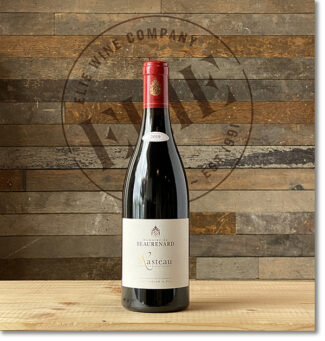 8. Domaine de Beaurenard, 2019 Rasteau ($33)
8. Domaine de Beaurenard, 2019 Rasteau ($33)
80% Grenache, 17% Syrah and 3% Mourvèdre from Beaurenard’s sixty acres in Rasteau, the wine displays an array of floral scents in the nose in the nose with garrigue and wild blackberry notes. Fruity and spicy on the palate with wild raspberry, rosemary and thyme with an appealing tannic structure.
*click on photo for more info
cru Tavel
‘Bone Dry Rosé, Fruit Concentration and Earthy Complexities’
To say ‘Tavel rosé’ is to repeat yourself since, by law, all wine from Tavel is rosé. Creeping along the right bank of the Rhône River in the Gard, the soils of Tavel are a potpourri of small stones called galets roulés, fine sand and fractured limestone, and the hot, dry climate allows the grapes (predominantly Grenache, Syrah and Clairette) to achieve full phenolic ripeness. As a result, Tavel rosé tends to be richer and more deeply colored than the salmon-pink wines from other regions, with an associated complexity of flavor in the glass.
Château de Manissy
The estate (which has belonged to the Congregation of Missionary Fathers of the Holy Family since the 18th century) operates under the motto, ‘Auspice clara Manissy Stella’, or, ‘beneath the protection of the bright star of Manissy.’ Since 2004, it has also operated under the auspices of Florian André, whose winemaking and cellar skills have upheld the Château’s reputation for Tête de Cuvée barrel-aged rosé.
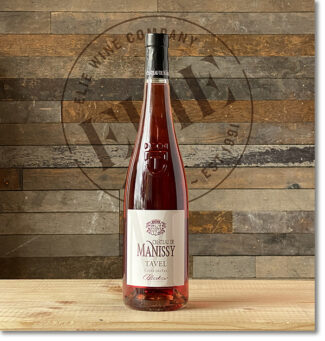 9. Château de Manissy ‘Cuvée des Lys’, 2021 Tavel ($19)
9. Château de Manissy ‘Cuvée des Lys’, 2021 Tavel ($19)
60% Grenache, 20% Syrah and 20% Clairette from vines that average 45 years old, grown in clay, river rock and fine-grained sand. It opens with aromas of white flowers and spring strawberries, filling out in a silky blend of watermelon and pomegranate; it is rich in minerality and intriguingly peppery on the finish with notes of honeysuckle and lime.
*click on photo for more info
cru Muscat de Beaumes de Venise
‘Delicately Fortified Sweet and Intensely Floral’
Sweet wines have been made in Beaumes de Venise since the 14th century; they were granted their own controlled appellation in 1945. The village is known for red wines as well, sold under the Beaumes-de-Venise appellation, created in 2005. Surrounded by Côtes du Ventoux in the south and east and Vacqueyras and Gigondas to the west and north, the land is Provençal in essence, with alternating sunbaked hills and fields of scree and lavender, with soils ranging from heavy clay to sand and gravel.
Muscat de Beaumes de Venise is made from Muscat Blanc à Petit Grains and a darker version with a similar, if slightly darker profile. The technique employed involves the traditional process of ‘mutage’ wherein grapes are picked in whole bunches, with several passes to ensure optimum ripeness and to ensure that the grapes have natural sugar level of 252 grams per liter or more. Grape spirit (at a minimum of 96 percent pure) is added to the partially fermented grape must to kill the yeast and stop the fermentation. It in turn results in a high level of residual sugar – at least 100 grams per liter must be achieved in the finished wine. Alcohol content must be a minimum of 15 percent by volume.
Domaine des Bernardins
The word ‘Beaumes’ gives an idea of how far back this part of France traces human habitation—it means ‘caves’, which was the domestic arrangement of the original neighbors of current Domaine des Bernardins owners Andrew and Elisabeth Hall.
The winemaking tradition here is nearly as storied; the property was previously owned by Bernardin monks and was transformed into a wine estate by Louis Castaud, who was concerned about the village’s production methods were disappearing. Within ten years, in 1945, he had achieved appellation status for Muscat de Beaumes de Venise, and today, his daughter Renée Castaud is still active in running the estate, assisted by granddaughter Elisabeth and husband Andrew, and now, their son Romain. The family still has one bottle of 1847 Muscat that is very highly prized.
The vineyards consist of 54 acres, with 37 acres of Muscat and 17 acres of Syrah and Cinsault for Côtes du Rhône Rouge production. The viticulture is traditional; pruning, de-budding, trellising, leaf removal and picking are done by hand while the soil is prepared by good, old-fashioned ploughing, using organic compost made from grape marc of the discarded stalks and skins. Domaine des Bernardins follows standards for sustainable agriculture.
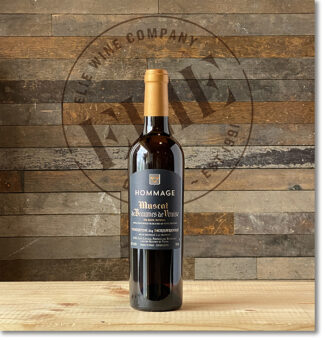 10. Domaine des Bernardins ‘Hommage’, nv Muscat de Beaumes-de-Venise (VDN) ($41) 500 ml
10. Domaine des Bernardins ‘Hommage’, nv Muscat de Beaumes-de-Venise (VDN) ($41) 500 ml
75% Muscat Petits Grains Blancs, 25% Muscat Petits Grains Noirs; golden and grapey, unctuous with honey, grilled pineapple, lemon zest, rosewater, baked apple and fresh ginger. A great viscosity carries a long finish of lavender and crème brûlée with a touch of oak and cayenne at the end.
*click on photo for more info
Southern Rhône Vintage Journal
2018
Preceding the 2018 growing season, both the winter and spring were wet and mild, but despite some light rain falling during flowering, it was still reasonably successful. Unexpected storms in June caused some difficulties with mildew and rot, more pronounced the further south you look. The rot meant many producers had to spray but, unfortunately, a large amount of the crop was still lost. Eventually, the damp weather dried up and a hot, dry summer took its place. By the time it came to harvest, temperatures were high and producers had to work quickly when handling the grapes.
Mildew was a particular problem for susceptible Grenache and, as one of the mainstay grapes of the Southern Rhône, this was particularly devastating. Many organic growers who didn’t spray suffered horrendously with heavily reduced yields. Winemakers who typically used Grenache as a dominant component of their blends and suffered heavy losses had to shift the focus onto others, namely Mourvèdre. Even so, the vintage is generally considered to have produced a few wonderful densely concentrated wines with strong fruit flavors and excellent structure.
2019
The 2019 vintage began well and finished better; a cold, dry winter delayed budburst a bit, but it arrived under idyllic conditions and progressed evenly. Likewise flowering a fruit set without the mildew of 2018.
Sizzling midsummer heatwaves striking in June and lasting through July have become the norm in southern France, but rains in August were welcome relief. The harvest was mostly done in September and the resulting wines are very good. For the reds, reports suggest that they are extremely concentrated – unsurprising considering the summer heat – but very well balanced with great acidity, indicating that the grapes had crucial periods of time, such as chilly nights, to cool down.
2020
Another in string of fine vintages for Southern Rhône, the year began with a mild winter which transitioned into to a balmy and unusually dry and frost-free spring, prompting both an early budburst and flowering. Early summer brought welcome rain showers before an intensely hot arid summer set in. In sharp relief to the sweltering sunbaked days, chilly nights helped to cool and regulate the vines, while the odd intermittent shower helped to both rehydrate and revive the vines. The warm weather occasionally delivered periods of humidity which made powdery mildew and other diseases a concern, however, most producers were able to mitigate the risks.
The high temperatures made for an earlier than usual harvest and pickers set to work early in the day to avoid the extreme midday heat. Picking at cooler times is also better for the grapes as it tends to preserve their aromatic character. Both whites and reds were picked well ahead of their usual timeframes and light rains fell over the harvest, helping to rehydrate the last grapes on the vines.
2021
As benign as the spring weather was in 2020, 2021 unleashed the opposite. Unusual highs in March prompted unseasonable vine growth, which was then hit by a climactic freight train in April when a series of bitter frosts dramatically cut yields. The summer was spotty, with persistent drizzle in June and cataclysmic thunderstorms in July and August, leaving in its wake, alongside vine damage, humidity that encouraged disease.
Such a seesaw of conditions meant that grapes were slow to reach phenolic ripeness and, as a result, the harvest came later and was longer and slower than normal. Fortunately, picking occurred in better weather and the resulting wines were quite good. In general, both the reds and whites have been described as sophisticated with firm structure and acidity and although alcohol was lower than in other years, there was still enough to give sufficient body. Like the alcohol, the fruit character was less intense than in previous years but what was there was fresh, clear and pretty.
Notebook …
Due to Climate Change, The Southern Rhône Embraces New Heights
In a recent review, the scientific community outlined the 2021 assessment report of the Intergovernmental Panel on Climate Change; the panel uncovered how the last four decades have been sequentially warmer than any other decade since 1850.
A spoonful of grape-sugar may help the science go down: “In order to maintain proper growing temperatures, many vineyard owners have sought expansion towards elevation, where not only are mean temperatures lower but there is a higher thermal amplitude and global radiation, particularly in the UV spectrum. Additionally, under higher altitudes, grapes display higher anthocyanin content and higher acidity, alleviating the effects of CC conditions that cause a premature ripening” and concluded that they had noticed how “wines produced from high altitude vineyards tend to have better color, higher acidity and more desirable aromatic profiles.”
In plain English, this means that the vineyards of Rhône’s south, which in the past were not overly concerned with elevation, have begun to edge upward into the mountains. Throughout most of its viticultural history, grapes were grown primarily on rocky flatlands where ample sunlight could pump richness and alcohol into the wines, and elevations of 500 feet or more were, in cooler times, considered marginal for grape growing. Over the past twenty years, however, with the average daily temperature in the valleys rising, experimental vignerons have begun to explore the terroirs of the hillsides surrounding the current vineyards. The wines they are producing are ripening earlier and display a freshness and precision unlike anything you’d expect from the Southern Rhône.
Still, it’s a panacea, not a cure: “It’s going to be an adaptation which will allow us to keep making balanced wines,” says Louis Barruol, president of the Gigondas growers’ syndicate and the proprietor of the historic Château de Saint Cosme. Higher altitude vineyards are considered one of the many answers to global warming, for sure. But there is no miracle.
NEW ARRIVALS
Domaine Laroche (Chablis)
2020 Wines Show Distinctive Terroir Influence
As one of Chablis’ most respected holders of Grand Cru vineyard land, Domaine Laroche is in many ways synonymous with the appellation. Shored up by a thousand years of history, the first Laroche to own land was Jean Victor whom in 1850, bought his first parcels of vines in the village of Maligny, a short distance from the village of Chablis. Passed along from father to son, the Laroche vineyards continued to expand gradually and by the mid-1960s totaled fifteen acres. In 1967, when Henri Laroche inherited this land, he had witnessed three years in the 1950s and 1960s in which there was no production at all; his vines yielded very little, and it was impossible to make a living from vine-growing alone—local farmers had turned to cereal crops and animal rearing to survive. Winemaking became something of a Chablisean afterthought, and so plagued was the region with spring frosts that Henri managed to save a section using rudimentary techniques such as burning straw and old tires.
With his son Michel joining the team, Laroche expanded into the best Crus in Chablis, for a current total of 222 acres, including 15 acres of Grand Crus, 52 acres of Premier Crus, and 156 acres of Chablis AOP. Only Chardonnay grapes are grown, of course, and the best vineyards are planted primarily on the region’s unique Kimmeridgian soil—a mixture of clay, chalk and fossilized oyster shells, renowned for producing crisp, mineral-driven, precise and elegant wines prized throughout the world.
In 2000, Michel Laroche founded the Union des Grands Crus de Chablis for the purpose of promoting Chablis wines. He implemented quality controls still used by the members, with specific requirements regarding the management of the vineyards (density of plantings) and winemaking (at least 13 months of aging). Domaine Laroche is still an active member of the Union today, confirming its position as a leader in the appellation.
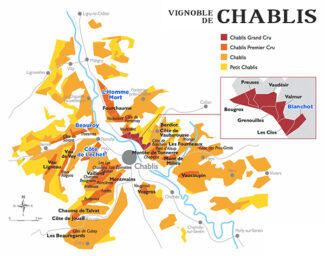
Chablis 2020: “A Great Vintage”
According to Louis Moreau, president of the Chablis Commission, “2020 mild in the winter, dry in spring and enjoyed a summer with high temperatures along with a drought in August. Most of the Bourgogne region saw a very early bud-break this year, with seasonal temperatures above normal to kick off the growing season. Therefore the challenge was to preserve the vine, harvest early but at maturity and being able to maintain our Chablis typicity—which is a purity of minerality which will shine through in the 2020 vintage.”
As the northernmost region in Burgundy (situated between Paris and Beaune), Chablis is planted entirely to Chardonnay on characteristic Kimmeridgian subsoil—primarily marl with bands of fossil-rich limestone. Chablis is prone to hot summers and harsh winters, with spring frost and hail storms counted among common threats, and these threats have been multiple whammies in the past few vintages.
“This year was kind to Chablis in terms of these climactic events; a reprieve in a year of nearly constant tension,” writes Cécile Mathiaud, head of public relations for the Bourgogne Wine Board.
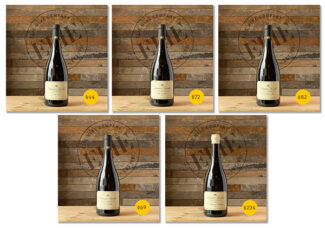
The Wines
2020 Domaine Laroche ‘Vieille Voye’ Chablis ($44)
Vieille Voye (the ‘Old Way’) encompasses 17 continuous acres located beneath Premier Cru Les Vaillons on typical Kimmeridgian terroir. Even when full ripeness is achieved, the wine maintains the typical salty character of the terroir.
2020 Domaine Laroche Chablis Premier Cru Les Beauroys ($69)
Les Beauroys is a left-bank (of the Serein river) Premier Cru vineyard; the wines are typically flinty and crisp.
2020 Domaine Laroche Chablis Premier Cru Côte de Léchet ($72)
The 150-acre Côte de Léchet vineyard lies just above the small village of Milly on a steep slope topped with forest. Its southeasterly exposure tempers the morning sun, in contrast to the sunset-facing slopes on the other side of the valley, encouraging slower ripening in Chablis’ relatively cool continental climate and ensures that the acidity that typifies the region’s wines flourishes.
2020 Domaine Laroche Chablis Premier Cru L’Homme Mort ($82)
The grimly named ‘Dead Man’ vineyard is one of the most northerly Premier Crus in Chablis. It’s located within the larger Fourchaume Premier Cru vineyard, just south of the town of Maligny. The wines are tight, with toasted bread hints and a strongly tangy character.
2020 Domaine Laroche ‘La Réserve de l’Obédience’ Chablis Grand Cru Les Blanchots ($234)
Located on the easternmost side of Chablis, Les Blanchots is unique among the Grand Crus of Chablis. Its clay and limestone soil contains ferrous clay and its aspect offers an exceptional amount of morning sunlight, giving the wine a distinctive and dominating floral character and remarkable finesse.
- - -
Posted on 2022.10.20 in Rasteau, Vacqueyras, Lirac, Cairanne, Chablis, Côtes-du-Rhône, Muscat de Beaume de Vanise, Gigondas, Tavel, France, Burgundy, Wine-Aid Packages, Southern Rhone
Featured Wines
- Notebook: A’Boudt Town
- Saturday Sips Wines
- Saturday Sips Review Club
- The Champagne Society
- Wine-Aid Packages
Wine Regions
Grape Varieties
Aglianico, Albarino, Albarín Tinto, Albillo, Alicante Bouschet, Aligote, Altesse, Arbanne, Auxerrois, Barbarossa, Beaune, Biancu Gentile, Bonarda, bourboulenc, Cabernet Sauvignon, Caladoc, Calvi, Carcajolu-Neru, Carignan, Chablis, Chenin Blanc, Cinsault, Clairette, Cortese, Corvinone, Cot, Counoise, Dolcetto, Erbamat, Fiano, Frappato, Fumin, Gamay, Garganega, Garnacha Tintorera, Godello, Graciano, Grenache, Grenache Blanc, Grolleau, Groppello, Jacquère, Juan Garcia, Lladoner Pelut, Macabeo, Maconnais, Malbec, Malvasia, Malvasia Nera, Marcelan, Marsanne, Marselan, Marzemino, Melon de Bourgogne, Mencía, Merlot, Montepulciano, Montònega, Moscatell, Mourv, Mourvèdre, Muscadelle, Muscat, Natural, Nebbiolo, Nero d'Avola, Niellucciu, Patrimonio, Pecorino, Pedro Ximénez, Persan, Petit Meslier, Pineau d'Aunis, Pinot Auxerrois, Pinot Blanc, Pinot Gris, Pinot Meunier, Pinot Noir, Pouilly Fuisse, Pouilly Loche, Poulsard, Riesling, Rousanne, Sagrantino, Sangiovese, Sciacarellu, Semillon, Souson, Sumoll, Tempranillo, Teroldego, Timorasso, Trebbiano Valtenesi, Treixadura, Trousseau, Ugni Blanc, Vermentino, Viognier, Viura, Xarel-loWines & Events by Date
- April 2024
- March 2024
- February 2024
- January 2024
- December 2023
- November 2023
- October 2023
- September 2023
- August 2023
- July 2023
- June 2023
- May 2023
- April 2023
- March 2023
- February 2023
- January 2023
- December 2022
- November 2022
- October 2022
- September 2022
- August 2022
- July 2022
- June 2022
- May 2022
- April 2022
- March 2022
- February 2022
- January 2022
- December 2021
- November 2021
- October 2021
- September 2021
- August 2021
- July 2021
- June 2021
- May 2021
- April 2021
- March 2021
- February 2021
- January 2021
- December 2020
- November 2020
- October 2020
- September 2020
- August 2020
- July 2020
- June 2020
- May 2020
- April 2020
- March 2020
- February 2020
- January 2020
- December 2019
- November 2019
- October 2019
- September 2019
- August 2019
- July 2019
- June 2019
- May 2019
- April 2019
- March 2019
- February 2019
- January 2019
- December 2018
- November 2018
- October 2018
- September 2018
- August 2018
- July 2018
- June 2018
- May 2018
- April 2018
- March 2018
- February 2018
- January 2018
- December 2017
- November 2017
- October 2017
- September 2017
- August 2017
- July 2017
- June 2017
- May 2017
- April 2017
- March 2017
- February 2017
- January 2017
- December 2016
- November 2016
- October 2016
- September 2016
- August 2016
- July 2016
- June 2016
- May 2016
- April 2016
- March 2016
- February 2016
- January 2016
- December 2015
- November 2015
- October 2015
- September 2015
- August 2015
- July 2015
- June 2015
- May 2015
- April 2015
- March 2015
- February 2015
- January 2015
- December 2014
- November 2014
- October 2014
- September 2014
- August 2014
- July 2014
- June 2014
- April 2014
- March 2014
- February 2014
- January 2014
- December 2013
- November 2013
- October 2013
- September 2013
- August 2013
- July 2013
- June 2013
- May 2013
- April 2013
- March 2013
- February 2013
- January 2013
- December 2012
- November 2012
- October 2012
- February 2004
Search



